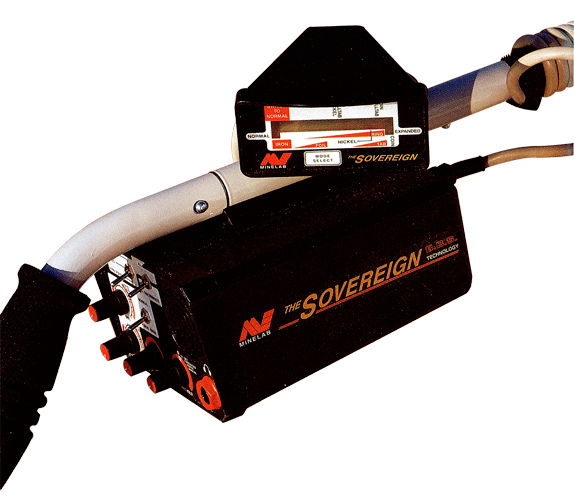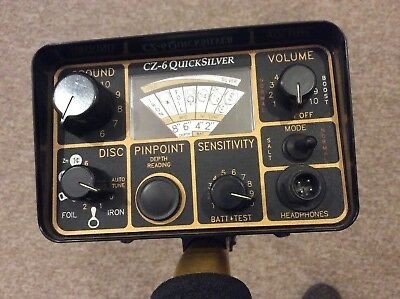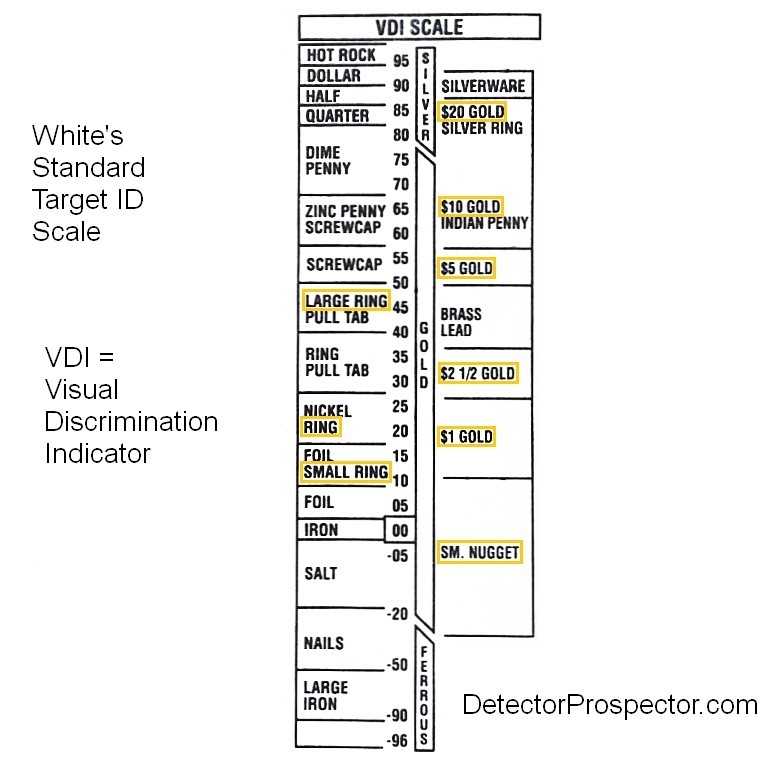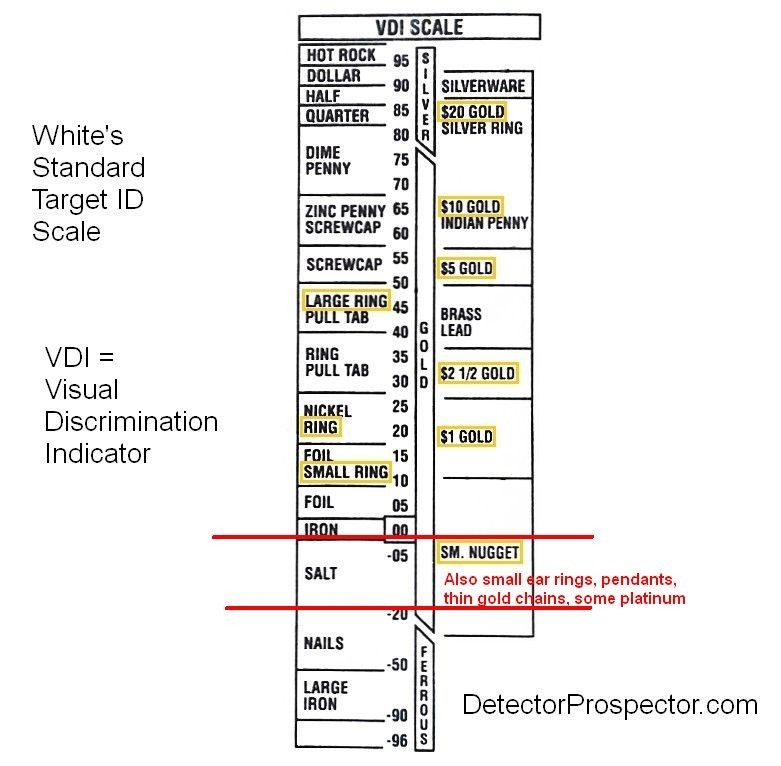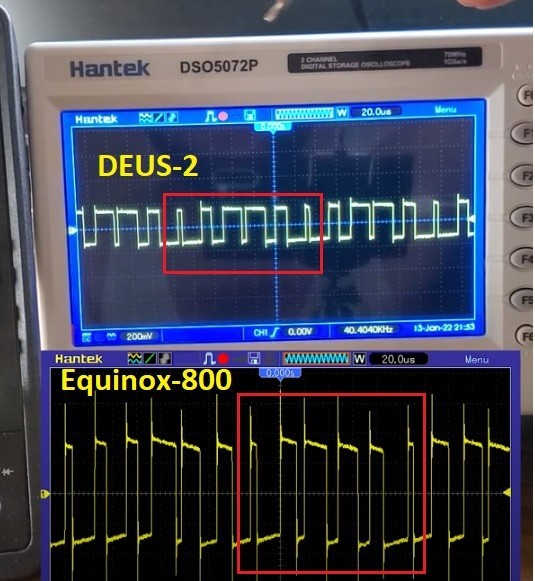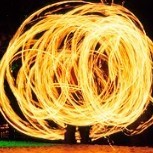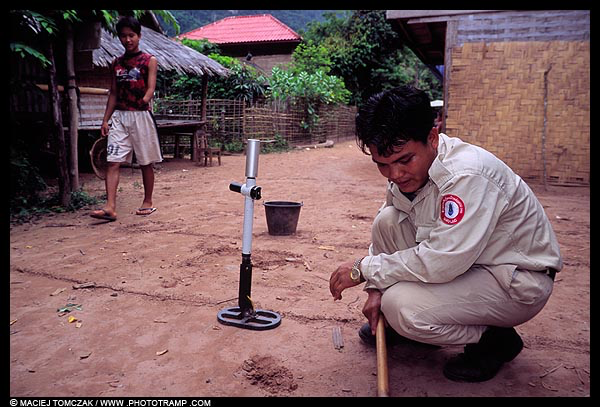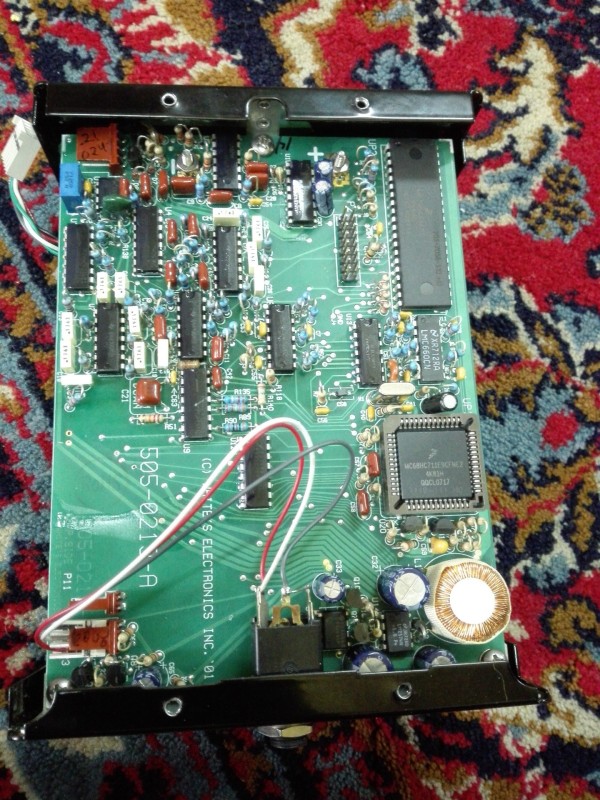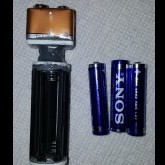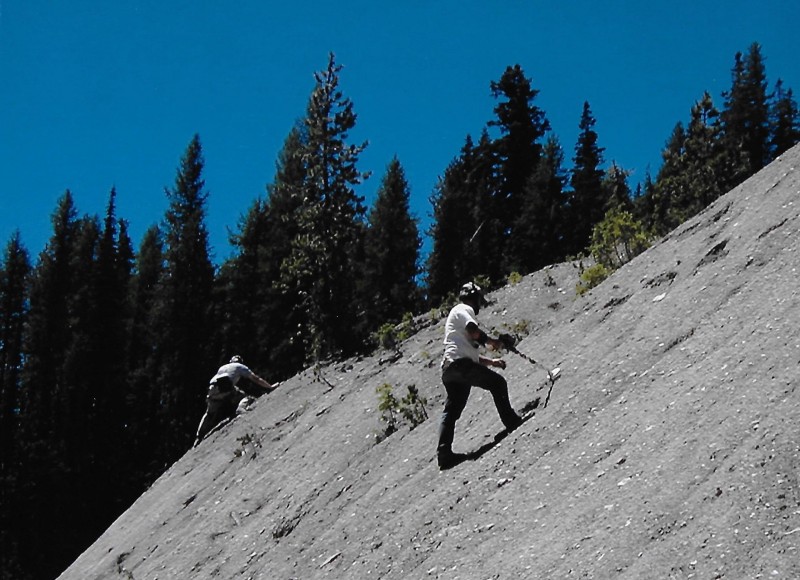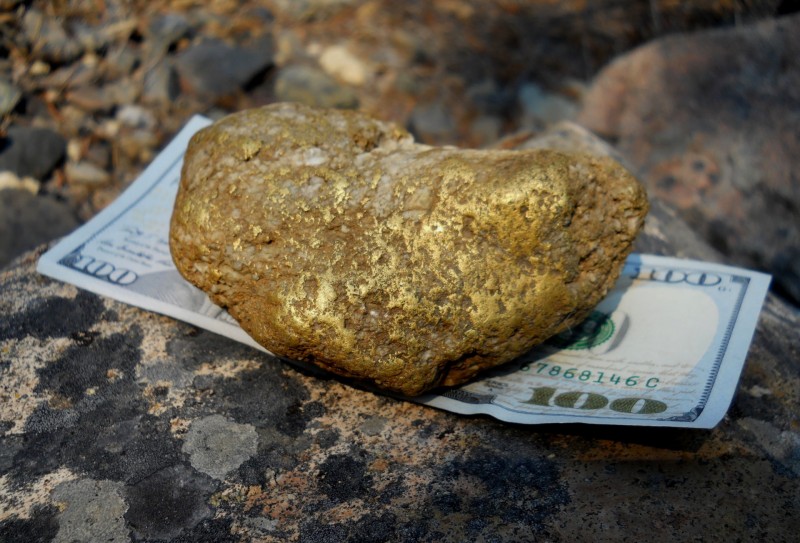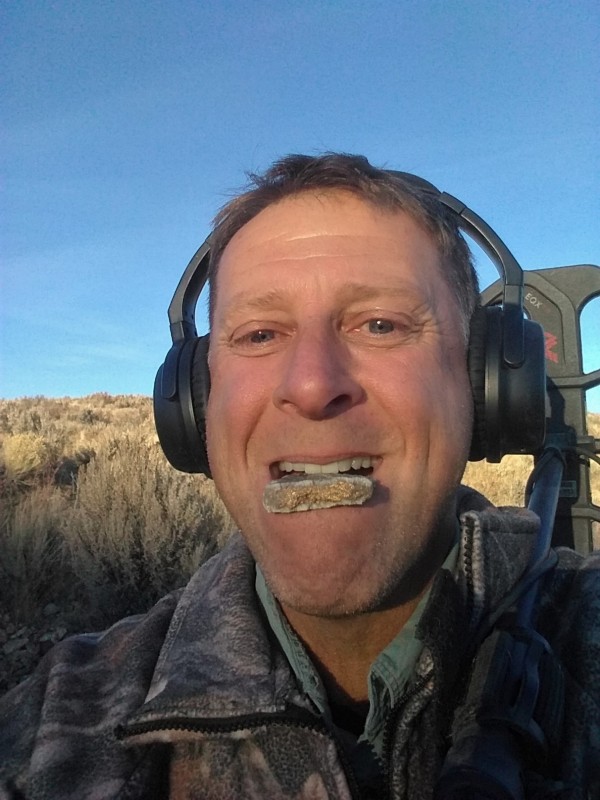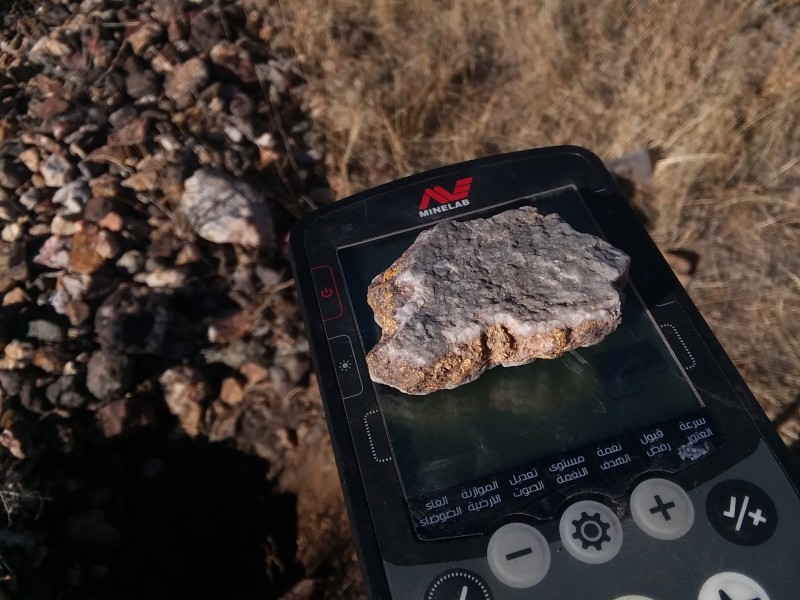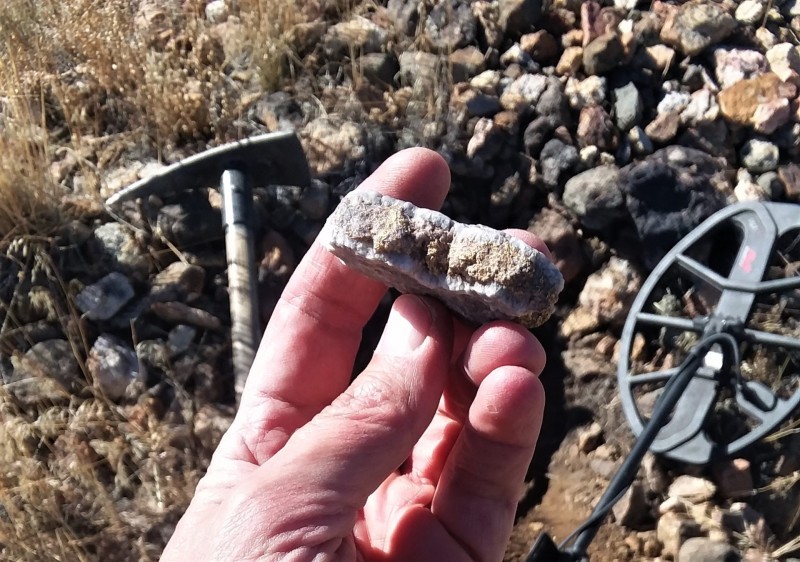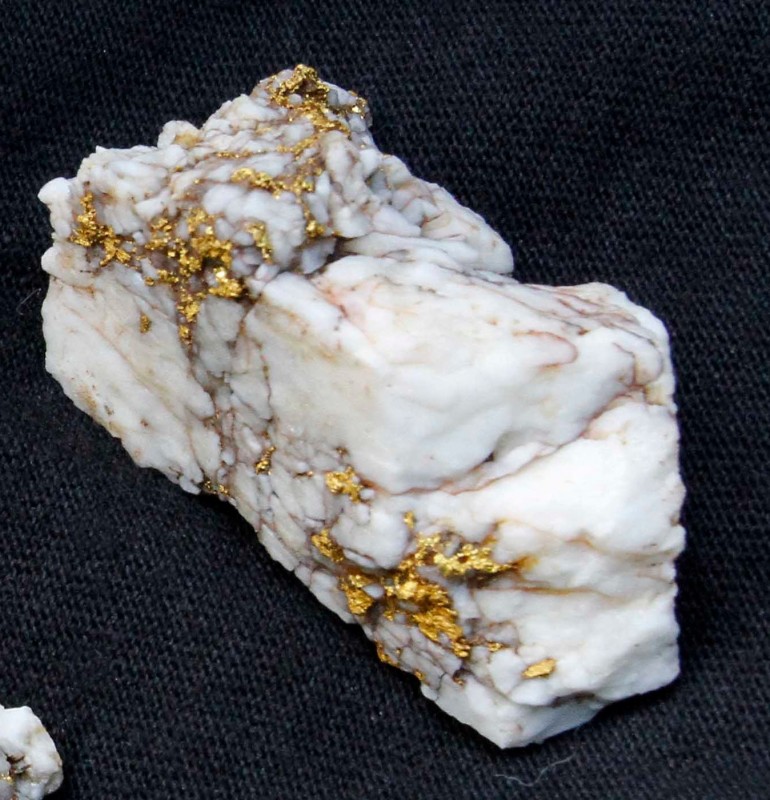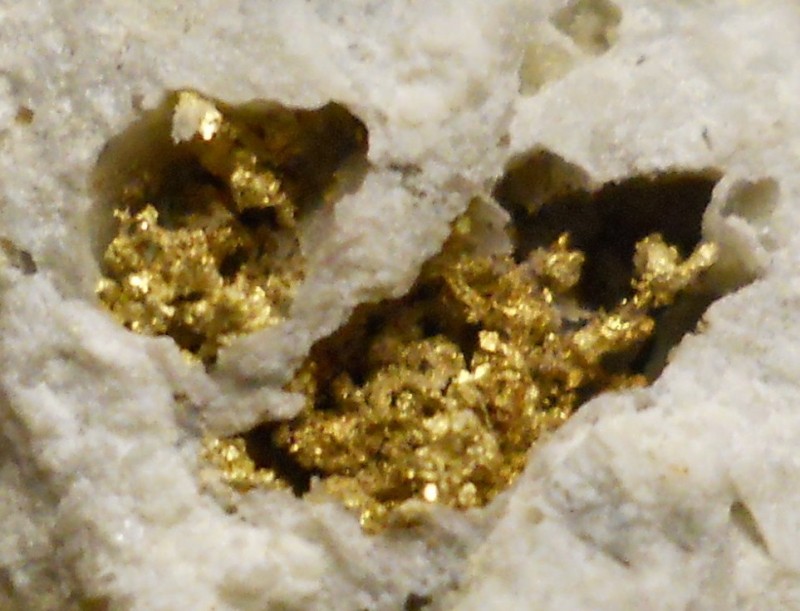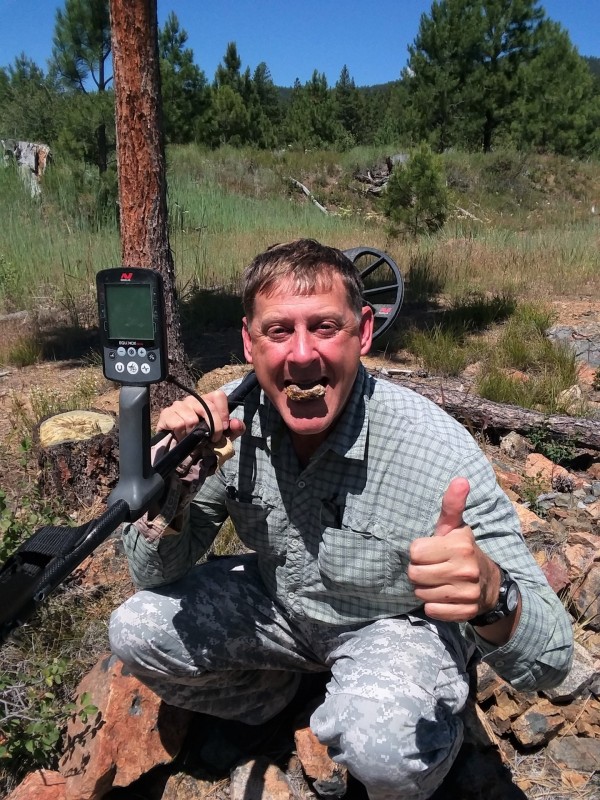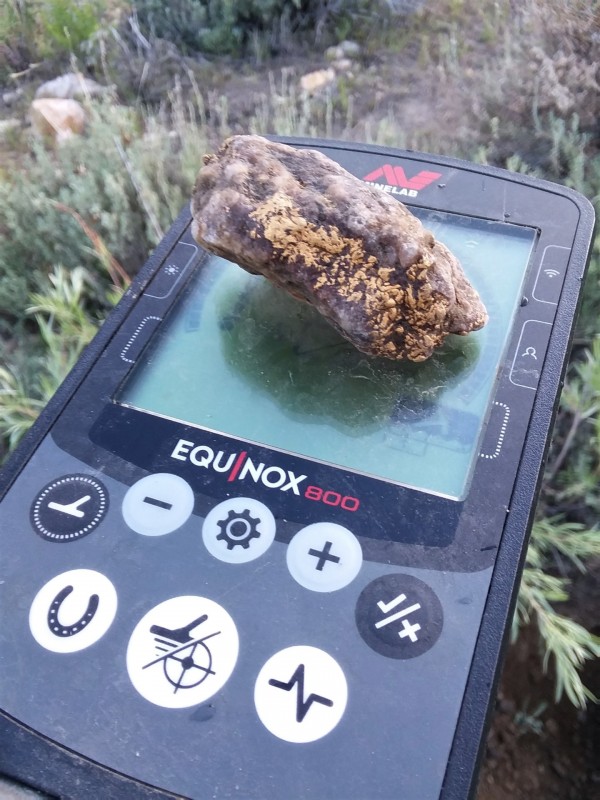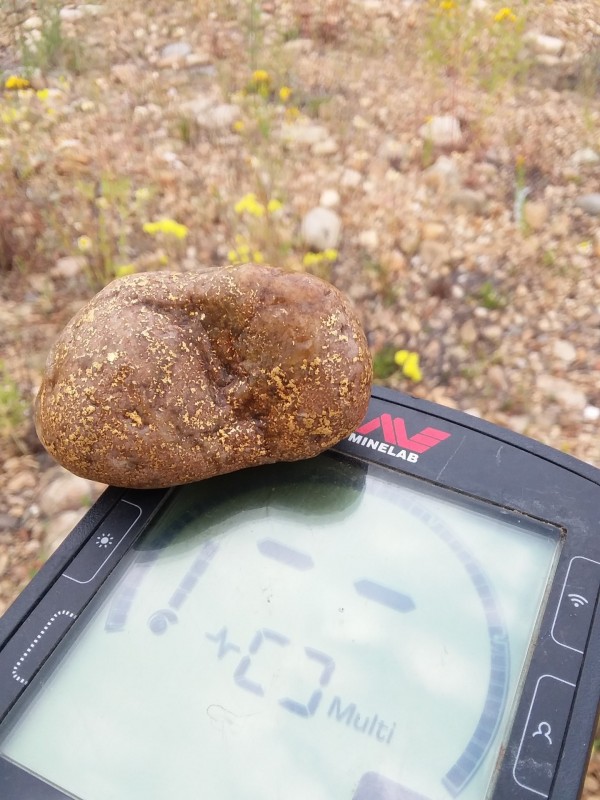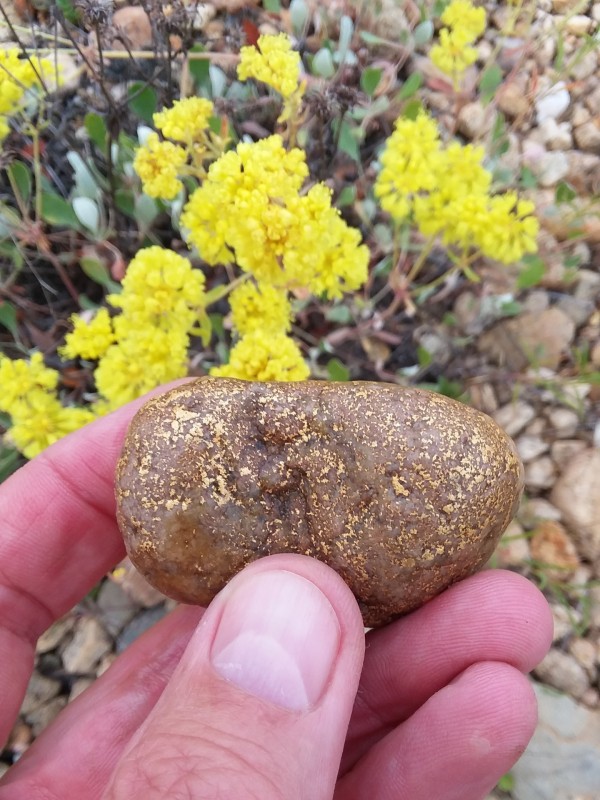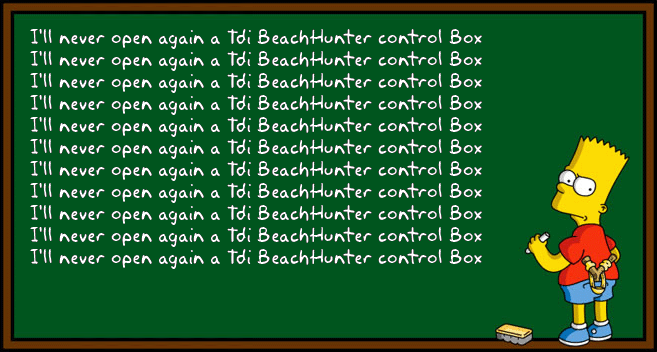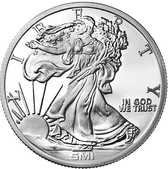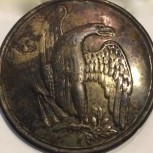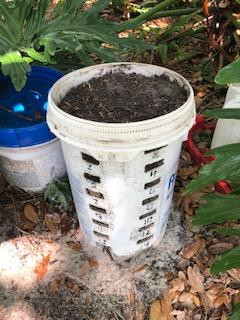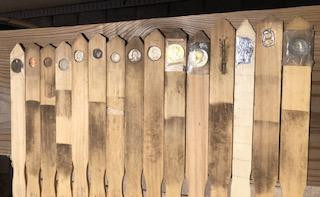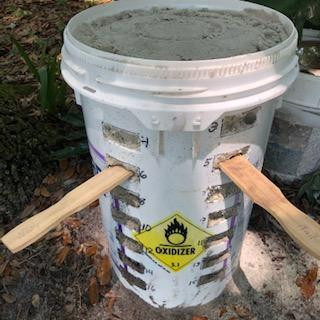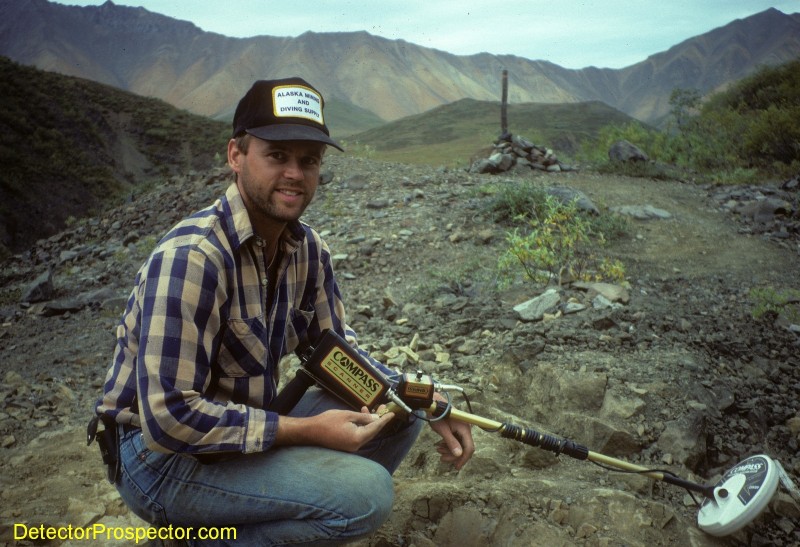Search the Community
Showing results for tags 'detector tech'.
-
We have the Deus 2 just announced, Nokta/Makro Multi on the way, possibly the next generation Equinox from Minelab, and maybe even another Garrett multifrequency model to follow Apex, all coming in 2022. I guess we should even toss First Texas in there, as they just officially discontinued the CZ-3D, with the possibility something new will replace it soon. If this does not mean we are moving past single frequency, I don’t know what does. Or are we? There will no doubt always be a place for a finely tuned single frequency detector. However, if you consider Deus as selectable frequency, and Equinox as selectable/multi, then very many of us have already moved past a simple single frequency detector as our primary detectors. This is the thread to speculate on what is coming, where we are, and where we are headed. 2022 is shaping up as the year SMF (simultaneous multifrequency) finally takes off for real. In some detectors, it’s just companies chasing the latest marketing catchword. Multifrequency is only as good as the way it is implemented, otherwise we’d all have been swinging White’s DFX ages ago. It’s not enough to make a SMF detector, it also has to have genuine performance advantages. About the only given is that any multifrequency machine will outperform a single frequency on a saltwater beach. The rest, however, is very much up in the air. For some detailed explanation of the technology, and a history of past selectable and simultaneous multifrequency detectors, see my write up on Selectable Frequency And Multiple Frequency Where it all started, Fisher CZ-6 and Minelab Sovereign, both released in 1991. I think Fisher wins claim to being first, since Minelab takes a swipe at them in their Sovereign introduction. Notice how the misdirection on transmitted versus received and processed started on day one. Fisher CZ-6 Quicksilver. The technology: Dual frequency Fourier Domain Signal Analysis. Patented state-of-the-art analog/digital electronics transmit two VLF signals (one 5 kHz, one at 15 kHz) deep into mineralized soil. The receiver circuitry had two ground compensated target signals to analyze, compare and identify. The result? Deeper targets, more accurate target identification. Wet sand is no problem for the CZ-6, it compensates for salt and ground mineralization simultaneously! Source Fisher CZ-6 Datasheet "The Sovereign" is the first of the latest generation of metal detectors from Minelab featuring Minelab's new technology called Broad Band Spectrum or BBS for short. This revolutionary new technology which is unique to Minelab has already been awarded patents in the USA, Canada and Australia and has several pending. Unlike other metal detectors which operate at just one frequency, or even the "newest" two frequency machines, "The Sovereign" actually transmits over a wide spectrum of frequencies. The resulting signal that is received from a target buried in the ground is processed by a microprocessor that removes interference caused by ground mineralization which limits the depth at which targets can be found, and often results in inaccurate target identification. The remaining signal can then be analysed to determine the actual composition of targets even if they are deeply buried, or if the ground is mineralized or salt water is present. Thus it is the only detector that can simultaneously reject both salt and mineralization while at the same time accurately discriminating the target, making it ideal for black sand beaches and many desert areas. In many areas that are highly mineralized and have been heavily searched in the past, "The Sovereign" will prove that many of the valuable targets are still there waiting for a Treasure Hunter with the proper detector to locate them. Source Minelab Sovereign Instruction Manual
-
This post was a response buried deep in a thread on the Equinox Forum, but got long enough on a subject I think about a lot, that it deserved its own thread. Here you go. I find the whole George Payne way of conceptualizing things to be rather out of date myself. That was back in the day when only one thing mattered - detecting coins. Silver coins in particular. So he was looking at frequency, and most importantly, coin size targets. If you do that, fix target size, you get the false idea that frequency corresponds to type of metal. Nickels respond here. Gold coins here. Copper coins here. And the biggie, silver coins here. That's how the first coin discriminators were conceived. But it has also lead to this mythology that frequency corresponds to metals. Gold is high frequency, silver low frequency. No, it's not. There is no correlation between frequency and type of metal if you do not fix the size at some artificial limit. In fact, gold ranges from ground readings all the way to so-called silver readings. If you fix the metal type, frequency corresponds to size. Low frequency big gold, high frequency small gold. There was also ground to deal with, and ground reacts less well at low frequencies, so a double bonus for silver hunters. You might think it is low frequency working better with silver. But you might also think of it in terms of the detector simply being better able to see the silver, for not seeing the ground. It's all about conceptualization, and you can conceive of the same thing from different angles. I consider the old George Payne way of looking at things as obsolete from my perspective. It really was only something that worked well in the United States, and only because of an accident in our coin size and metal types. It allowed a scale to be created that worked well with silver coins and nickels, while knocking out a lot of trash items. In most other countries, our target id scale is worthless because their coins do not fit our classic scale. I detect for gold. I think in different terms entirely. For me frequency does two opposing things. Higher frequency is better for small targets. Small gold, small silver, small copper..... small stuff. But high frequencies also enhance ground, and especially, hot rock responses. The two effects offset each other, and can reverse things if ground is severe enough. This also totally applies not to nugget hunters like myself, but almost anybody hunting coins and relics under any situation but the classic U.S. silver coin regime. Let me explain. So I want to find gold nuggets. I must first think about the nugget size that I am looking for. I can look for the more common small gold, or the rarer large gold. If I want tiny gold, I usually want a high frequency detector, the higher the better. Now, here is the kicker. High frequency does just fine on large gold also. In fact, high frequency just detects well on everything - in the air. So air test a Gold Bug 2 on things, and it is amazing. Unfortunately, the high frequency also "lights up" the ground to an amazing degree, and it is hard to get good depth on anything at very high frequencies. The signal attenuates rapidly in the ground, and the worse the ground is (more magnetite in general), the faster the depth drops off. Hot rocks that never responded at low frequencies are now everywhere at high frequencies. Lower frequency starts looking better not just because it does better on large targets, but just as much because it is less reactive to the ground. The 71 kHz Gold Bug 2 is an amazing detector. I can find pinhead gold with it. The big caveat is that in most nugget ground it has low penetration, and is very poor on large nuggets at depth. Not because it air tests poorly on large gold, but because the ground sucks up the signal. 71 kHz is great for small gold, and even large gold in the mildest soils, but in bad ground it has poor depth, and makes hot rocks a real issue. If I am looking for large gold at depth, I might very well use a lower frequency VLF in the old days, just as much because it is responding less to the ground as anything else, allowing large gold to be more easily found at depth. For my purposes, a PI detector for a long time was just a high power, super low frequency detector. Huge punch on large gold, with minimal ground response. So PI took over early on from the VLF low frequency, large nugget detectors of the time. I mentioned relic detecting and coins in other countries. If you detect Europe, our U.S. coin scale is garbage. It's not "low frequency = silver." Over there silver can be all over the target id map. Huge silver coins. Or tiny silver coins. Or small coins hammered thin as foil. Or those hammered coins cut to make change. Silver under those circumstances occurs anywhere on your target id scale from ground to the highest reading, 0 to 100. It all just depends on the size, with a little ground effect tossed in to drag things down. So in Europe, if you want to chase tiny silver cut coins, or very small gold coins, higher frequencies work well, whether it is gold or silver. The metal does not matter. It is size that matters. Relic hunters see the very same thing. High frequencies find the small bits, regardless of what they are - worst fact being tiny ferrous. I long ago tossed the frequency and metal thing in my garbage can. Here is my reality. High frequency will help me with smaller targets, but also make dealing with the ground harder. Low frequencies simply have less ground and hot rock response, and also less tiny trash stuff response, making them better if I want want to focus on larger targets, like coins or rings. In my lifetime experience there is a crossover point for gold, and going too high enhances tiny gold nuggets, but also loses depth due to ground issues. A sweet spot develops around 50 kHz, which White's chose ages ago in the Goldmaster II, as being great for small gold nuggets, while still retaining punch in bad ground on larger gold nuggets. Minelab rediscovered this with the Gold Monster, and went with 45 kHz for this very reason. They found pushing high did better on tiny stuff, but the cost in larger heavier gold was not worth it to serious nugget hunters in bad Australian type ground. If I was hunting tailing piles for ounce type gold nuggets, it is hard to beat a 15 kHz type detector, just like that ancient 15 kHz Garrett Groundhog circuit, that was at the time a high frequency, but in retrospect was a great large nugget lower frequency. The White's MXT at 13 kHz is superb on large nuggets in trashy locations. If you are in Europe, that 15 kHz sweet spot applied for a long time, but more recently people have discovered the benefits of higher frequencies on these tiny cut silver and small gold coin finds. Pulse Induction did serve as super low frequency for a long time. You gave up small gold to get big gold as deep as possible. The lack of ground response allows use of extra large coils. It is interesting to me that as newer PI detectors are pushed to get more sensitive to small gold, that ground and hot rocks have also become more problematic. The newest PI nugget hunters suffer from hot rock responses you never saw on the old PI models. PI is getting more like VLF over time. So Billy, does Minelab put all this in Multi-IQ processing? Of course. But not in the way you think. They think more like me. It's every bit as much about ground, and saltwater, and even EMI, and what you do not want to detect, more so than metal types. A primary choice is saltwater - that forces a low frequency mix simply to avoid the salt response. Which, as I seem to have explained to beach guys a million times, also knocks out small gold responses. For large coin detecting a lower frequency mix gives clean responses on larger targets like U.S. coins and rings, while getting less ground response, fewer hot rocks, and far less tiny trash signaling. It is not targeting silver coins per se, just larger stuff. For tiny items, gold nuggets, small hammered silver coins, a higher frequency mix works well, but you will deal with more ground and hot rock response, more tiny trash. Forget metal type. Think size and ground, including saltwater, and hot rocks. As you increase frequency, everything responds better, and small items that respond poorly or not at all at low frequencies will do better. Ground, saltwater, and hot rock signals also increase with frequency. The first cut off is at saltwater. To work there, you must have a lower frequency mix to eliminate salt signal, and you lose all tiny stuff as well, tiny aluminum, tiny gold. This can also do very well on large targets in any ground. The teens are really nice for general detecting, right on the edge of the salt range. 12 kHz - 15 kHz hits really well on most desired detecting targets, while not being overly sensitive to ground and the tiniest trash targets. 40 - 50 kHz is a sweet spot for gold nuggets and all really small targets, like the smallest cut silver coin, targeting the sub-gram range kind of stuff with some alleviation of ground and hot rock issues that develop at extreme frequencies. You get up above 50 kHz and you really are just surface skimming for the tiniest bits. Depth just drops off rapidly due to the ground, and so this is specialty range for the smallest targets. Multifrequency changes none of this, and making a machine that found everything best at all frequencies just gives you a detector that reacts to everything and finds nothing. It is about picking a few divergent frequencies that when differentials are applied, can add extra target information. This is as much about ground as anything else. The classic is the salt beach, where you want to notch out both salt response and ground response. Single frequency can't get you there except in crudest form, eliminating both, while losing a lot of gold. Using two frequencies lets you notch back in some gold jewelry missed by eliminating both ground and salt with a single frequency. Looking at two frequencies that are close together is a waste of time and processing power. The target and ground response is the same. But pick two very divergent frequencies, and you will see differences in target response and ground response. This whole idea of having a detector look at and analyze 100 frequencies simply makes no sense, and reveals the nonsense we have been fed for ages about more frequencies being better. Again, there are only a handful of gross frequency ranges that really matter. Under 10 kHz = find U.S. large coins well, minimal small trash and ground responses, few hot rocks. Call this Park Mode, with a special subset that tunes out salt, called Beach Mode 15 kHz plus or minus, great on a large range of small to large targets, while still not being overly sensitive to ground and very tiny trash. Call this Field Mode. This is an excellent all around compromise mode between low and high. 40 - 50 kHz is great for sub-gram targets, but will make dealing with ground and tiny trash problematic. Let's call this a Gold Mode. 70 - 80 kHz is basically surface skimming for pinheads, max hot rock and tiny trash response. Pinhead Mode? A niche area for sure. Four basic options, and really three, since the highest is very niche. It is also comparing results in these three or four options that give you the most bang for the buck in multi. They diverge enough to provide the basis for good differential algorithms. Again, multifrequency really just adds better ground and target id capability for cleaner, more accurate responses across the board. It's not some magic about finding all targets best at all frequencies by lumping them all together. Most frequency discussions simply miss the reality of what is going on, and what is being achieved by going multifrequency. I will say it one last time. Think of frequency, whether single frequency, or a mix of frequencies, in terms of the desired target size, offset by the added ground/salt response. Think of the target id scale as a size scale, low numbers are small targets, high numbers large targets. Think less about it being an indication of type of metal. Aluminum responds anywhere on the scale. So does gold, lead, silver, copper. Small foil a low single digit, and aluminum can like a silver quarter. Pick your frequency mix and your target id numbers to match the size of the targets you are seeking, and life will get easier. And quit thinking of multifrequency in terms of finding more targets better the more frequencies you use. Nonsense, just marketing nonsense. The White’s chart below kind of says it all. I’d certainly be picking a high frequency VLF for the tiny gold. But $20 gold coins? Any good detector is going to work, and I’d be far more likely to go 15 kHz or lower. Newer Thread in a Similar Vein
-
Every time we get new detectors for the beach, we get the same question. "Will it find thin gold chains better?" It comes up so often I finally dug up an old post I can just point to whenever it comes up. Here you go. Gold Chains and Other Small Gold In Saltwater Here is a similar question that comes up a lot: Why Won't My Detector Find That Gold Chain? There seems to be a thought process that thinks somehow multifrequency overrides basic laws of physics, that some magic new processing is going to fix the issue. No. Not as long as conductivity is the measure. Once you understand this, you stop asking the question. Hopefully the article helps out with that.
-
in this video we can see that the main transmitted signal is the same - Multi signal Equinox Park/Field/Gold = Deus-2 pr.1/2/3/4/8/12 - Equinox Beach and Deus-2 pr.5/9/11 signals are slightly different, but the upper frequencies are the same 24кГц - Equinox does not have a low-frequency signal, like deus-2 Deep and Diving program (Pr. 6/10)
- 9 replies
-
- 3
-

-
- detector tech
- minelab equinox
-
(and 1 more)
Tagged with:
-
https://www.theguardian.com/world/2022/jan/12/landmine-hunting-hero-rat-dies-in-cambodia-after-stellar-career?CMP=Share_iOSApp_Other
-
Here’s a topic for all you “Rocket Scientists” out there (and anyone else who’d like to chime in). I was having a discussion with another dealer. He felt that single frequency worked better because there’s a certain amount of performance loss with Multi. I was always of the opinion that Multi-Frequency was the best for most types of Metal Detecting. It allows you to hit ALL the targets that react better to certain kHz. Here’s an example from another hobby of mine (most of us have more than one). I shoot muzzle loading guns. The “Round Ball” type projectile that was used for hundreds of years performs best when shot out of a rifled barrel with a slow twist. Twist refers to the how many inches of flight it (the projectile) takes to make one revolution. The conical bullet came out during the Civil War and requires a faster twist. For modern muzzle loading rifles a slow twist would be 1 turn in 56, 60, 66, 70, etc. inches. For conicals, 32, 28, 24, etc. inches. In the 70s, one company came up with the idea of a “Compromise” twist; 1 tun in 48”. That way you only have to buy one gun. You can use Round Balls for Target shooting and Conicals for hunting. It shoots both “well”. Having said all that, does the Single Frequency work better than the Multi? Is there any kind of lack of performance or trade off having them (kHz) work simultaneously? Thanks! Walt
-
Hello everyone. Hope you all had a lovely Christmas. I've been doing pretty well with my nokta makro multi kruzer. I love it. I did some detecting in an old park today and found my first silver content silver. A 1929 Canadian dime. 80 percent silver 20 percent copper. Now I run my machine on 5 khz as this is supposed to give more depth for silver and copper etc I can't for the life of me remember what the dime was ringing in at but it rings it at 73 air tested. My question is it possible for that same dime to ring in at 30 on vdi and then obviously it'll change to 73 once out? I switched to disc at 55 and didn't really get many coins for the rest of the day. Found a 1897 young Vicky large cent that rang in at a choppy 30 to 75 and then 54 out of the ground. They're bronze. So far I've found 8 large cents numerous relics and the silver dime. Pretty happy. I know vdi is just a guide like. I'm thinking I may just dig anything that has a solid tone. I also dug 10 pull tabs and 5 bottle caps today haha
-
I haven’t been in the market for a new detector for some time now. The VLF detectors hanging around here all have a fixed preset unknown “recovery speed” and only one detector has the option of changing out one coil with another of different frequency. Imagine my surprised when I read up on “Simultaneous Multi-Frequency”. After learning more about it, what really jumped out to me was the ability to adjust the “recovery speed” and the impact it had on target separation and search depth. Better yet “adjustable recovery speed” was now married to “preset unknown range of simultaneous multi-frequencies”. Could it get any better? What if we woke up Christmas morning to discover somebody wrote a few algorithms allowing us the pick and adjust for a known range simultaneous multi-frequencies (low, mid, high) to go along with our adjustable recovery speeds. We could design your own detecting search modes based on the ground conditions and targets we were actually detecting that moment. Maybe the cat is out of the bag but not in our Christmas Stocking yet.
-

What Was The First " Smart " Detector?
mn90403 posted a topic in Metal Detector Advice & Comparisons
I'm wondering from those of you using detectors much longer than I have what would you say was the first 'smart' detector? Part of this question will be a definition of smart. I think of smart as being a detector that can do more than just 'respond' to a signal. It would do some processing. Certainly smart devices now have chips with algorithms. Would you define smart as a detector with a coin meter? Just wondering. Many definitions of smart devices now say it is a connected device. I'm not very 'smart' so that is why I am asking the question. Mitchel -
I mostly hunt in lakes and the bottoms are mostly all sand. A test on a sandy beach with the Equinox 800 and Xp Orx, both hit hard on a 14k 3.7 gram gold ring buried at 14". For mild ground I don't see a need for multi frequency. I do like the multiple frequencies on the Orx. Is there an advantage to multi frequency in mild ground?
-
THIS !! All the people boo hooing will be in line to get one at that price point. It will also force the hand of ML with their price structure. ML raised their price on the 800 and NM absolutely crushed that price point. The Legend doesn't have to be better, just equal to turn the fortunes in their favor. ML and their arrogant "obsolete" charge is foolish. Obsolete by definition means no longer produced or used. Many detectorist and their single frequency machines are still out there making great finds and having fun. Furthermore, single frequency detectors are still being made and sold. NM build quality is far and away superior to the Nox detectors.
-
Metal detectors often seem to have a 'Depth Gauge'. How is it calculated? Is it the strength (or inverse of it) of the amplitude of the return signal? So, for instance, everything else being equal, the 'deep' target would mean either a stronger target at greater depth or a weaker shallow target?
-
While we're all abuzz with the announcement and advertised feature and performance characteristics of the XP Deus II, I'm wondering about tests that distinguish between detectors' target separation abilities. 'Word on the street' is that in trashy iron sites, the original Deus is still the best available. Presumably those reports are based upon in-field testing, which of course is the real proof. But the downside is, (AFAIK) these are qualitative observations, not quantitative. Subjectivity involved? Unfortunately, yes. We do have Monte's Nail Board Test for a special case -- iron nails near a single coin, all in the same plane and typically all on the surface of the ground. Add depth combined with some mineralization (burying the MNB) and you've included another real world dimension. But in the field, multiple nearby targets are seldom in the same plane. So you hopefully see the purpose of this post. Has anyone seen/tried other methods to better simulate actual in-field conditions to differentiate between competing detectors to best be able to handle trashy sites?
-
I love coinshooting, and I'm often in my local parks or private permissions searching for clad and silver coins. But I noticed that when digging up shallow clad coins (3 inches or less), my AT Max with the stock coil would say the coin is 6 inches down. Sometimes, a surface coin would read at being 4 inches deep. I didn't think this was that big of a deal, b/c I could always pull out my F-Pulse and see if the assumed coin target was truly shallow or not. Also, the incorrect depth reading wasn't keeping me from digging a desired target. Tonight, I read: and http://www.fisherlab.com/hobby/davejohnson/SearchcoilfieldshapeApril2012.pdf Both of these mentioned anomolies or issues with DD coils and shallow targets. Is what I'm experiencing with my shallow coins and AT Max one of these anomolies? Or is there something else going on?
-
speculation please. what does the future hold? what advancements might happen? keith southern are you out there?
-
I got in a few hours of metal detecting yesteday with my AT Max, which included some time at a park and a few permissions (private homes). Nothing of note was found, although I continued to struggle with trying to find good targets in high-trash soil. Given how I'm using the Garrett AT Max, I know have two primary options for finding good targets (silver coins) in these types of conditions. First, get a smaller coil, like the 5x8. Second, start digging the trash targets to clear up the ground and reveal possible good targets that are being masked or otherwise "overshadowed" by all the bits of aluminum, nails and other garbage. The second approach is not a viable option for most places I hunt (parks and private permissions). Not only do I not have the time to implement that strategy, my body can't readily handle that much digging. Also, I'm pretty sure digging almost everything is bound to lead to the loss of any good graces I have with property owners and park maintenance crews. Ok, so that leaves the first option. But before I go that route, I have to concede the possibility of getting an Equinox. Based on my experience with my Vanquish, limited time on the Equinox 600 and experiences with my AT Max and Fisher F2, I'm confident that one of the advantages of getting an Equinox will be more stable VDIs and more accurate VDIs at depth. And right now, I think I can live with that. I understand that getting a solid signal (a good, repeatabe signal from both swings and in 2 directions) on a dime or quarter at 6+ inches in my mineralized soil isn't always realistic with the AT Max. But I know the AT Max is at least capable of getting a decent signal (a good, repeatable signal from at least 1 direction and in 1 swing). Put another way, I get how the AT Max may not get me the "dig me!" type of signal that an Equinox can, but I at least need it to get me the "take a closer look, please" signal. All of that to say that I'm thinking about how my AT Max's target separating ability and recovery speed limitations (using the stock coil) will compare to an Equinox 600 and a stock coil. I came to this realization when running the AT Max with only iron discrimination set at 35 resulted in information overload for me and notching out everything below 70 was likely leading me to completely miss "take a closer look, please" signals that might lead to silver coins, dimes or quarters. Therefore, I want to use Monte's Nail Board. I know it's not ideal, and I plan on using Steve's approach of using both the AT Max and Equinox 600 on real-world targets. But I think the Nail Board will offer quantitative data when comparing the AT Max and Equinox.I also plan on using it with my Fisher F2 and Vanquish 340 to help put things into perspective. So how do I go about doing this test? Here's my approach so far: Step 1: Create Monte's Nail Board and use it with a modern, clad dime and new nails. Step 2: For each of the 4 passes, I will give it a rating: Will Dig, Maybe Dig, Won't Dig. Step 3: I will set the sensitivities at either 50% or the highest possible given EMI Step 4: I will run each machine with zero discrimination and with enough notching so that it's only going to sound on dimes and quarters (and maybe copper pennies). Step 5: For the AT Max, I will also test it with iron discrimination set to 35. Step 6 (maybe): Run the test with the AT Max using both its stock and 5x8 coils. So here's my first real question: what changes or additions would you all make to my current approach? My second real question(s): what "base" setting should I use with the Equinox 600. I'm thinking Park 1 with recovery speed set at the highest setting (3?) and a small or moderate amount of iron bias. Should I also run some tests with the Equinox 600 in 4KHz mode? My third real question: would it be benefitical to modify Monte's Nail Board so that the nails are replaced by either clumps of aluminum or maybe pulltabs? A lot of my hunting is in parks and yards that are often littered with more aluminum trash than iron trash. Any insight is appreciated. Thanks!
-
From what I can gather, higher frequency VLF detectors are more suited for smaller gold but ground mineralisation may be something to factor in. Would there be a “better” frequency for nuggets 1 gram and above in heavy ground? I’m not too concerned if I miss sub gram nuggets if there is a better suited frequency. The old Garrett Groundhog circuitry was legendary in this country…..I think it was around the 15 kHz mark. Is this frequency range a good starting point or do I need to consider other things such as better ground balancing capabilities or Garrett’s extra coil voltage. My Minelab PI units will be mainstay detectors but as mentioned in another post, I have ground littered in man made iron junk and the ground mineralisation is severe. There are plenty of nuggets in the 1 gram to 5 gram range (maybe bigger) but the iron signals are as dense as 5 per square metre 🤬 Thanks for any ideas.
-
I’m a newbie and saving up to buy my 1st metal detector. Meanwhile I’m rockhounding a lot. I’m curious if folks have successfully applied portable ground penetrating radar (or other portable detecting devices) to predict likely location of crystal pockets in the hard rock, like in dolomite (for locating pockets of Herkimer Diamonds) or in granitic pegmatite (for locating pockets of gem tourmaline crystals) ? Any pointers would be appreciated.
-
Norvic asked why I was so proud of a VLF when I own and have posted much success with the other higher end detectors. It was my post on rating the higher end Minelabs....so here goes. There are many factors to my craze and style of detecting, but my finds are the facts and not many people can compare, unless they too use the tools (detector) and hunt the style I do. I consider myself a gold hawg or gold pig. I chase it all in terrains flat or tall. Terrain - I live in the Northwestern state of Idaho and much of my detecting in the surround state of ID., is Oregon, Nevada and occasional Montana. For the most part, OR, MT and ID are pretty much the same with steep terrain mountainous rough country. A day of electronic prosecting and hiking in such states, is much harder on the body for a guy my age, heck it’s harder for anyone. Going to Arizona, Rye Patch and other Northern Nevada high desert areas is a treat for my body in more ways than one. Maybe that is why so many people detect there? It’s easy to drive and get to without walking…boy are most of us lazy? YES, including me at times, but not in my home state (backyard where I play). The ID, OR, MT mountains have steep ravines/canyons and the water is at the lowest point. Here is the many miles of hand placer workings, dredge tailing and hardrock mining ore dump piles. The gold I am chasing is the stuff the old timers missed. Pic below - This huge ore dump pile produced a few thousand dollars in Specimens. This is the not so steep side and we had to tie off with ropes on the other side. Half the targets would roll down the hill and need to be found during a break when we were at the bottom. The PI's can't see this time of gold. Trash - Trash is my treasure in a way.. as I know the site has not been hunted as hard. Trash is what most detectorists hate, and I too get that way on occasion, but I know if I'm patient, I'll eventually be rewarded. A big factor I run into is 100 to 150 yr old man made trash from the early prospectors. They left much of it on the hill, in the placer digs and tailing piles. Many of the small mining camps were right on or near their diggings and they just tossed the old food cans, tobacco/coffee tins and worn out leather boots with hundreds of nails and broken, picks/ax heads shovels aside. Pic below- In old tailing piles a lighter, faster, better ID detector is best. He who digs the most non ferrous targets in a day, get to smile all the way home. Pic below- is the 1 pound specimen after cleanup. Tools – Know your detector, its limitations, strong and weak points. Bigger deeper detector is great in flat terrain and areas with limited trash. Raw depth and power is amazing to have, when the target you dig a foot or so deep is not a sardine can. How about a shovel head at 2 feet or more? Think about it and what you do when digging 5 or 6 of those an hour with your big deep penetrating detector. What does your body have left in the tank? My lighter VLF is easier to swing in rough terrain, has better Iron and Target ID, is not as deep or powerful in trashy sites. It saves me time from digging unknown iron targets, it saves me energy from digging deep holes, it saves me energy from having to pack around a bigger bulky detector. The proper detector for the site is a must and in many cases my lighter, faster, better target Identification, sub $1000 investment is the right tool. Pic below - This golden oreo was recovered in old hand placer workings with my VLF. Having what I consider the best identification VLF gold detector on the market saves me time. Pic below - It was recovered at 16" with Minelab EQ-15" coil. Yes I'll be going back over this area with the new CoilTek NOX 15" round as it is even deeper. Gold Knowledge- This is confusing to so many people as they think gold is gold. Yes I too used to think the same way. Luckily I hunt a variety of gold producing locations and sites I like to detect and learn from. My many years of comparing/testing detectors at such sites has given my staff and I an understanding of gold, its characters, density and how the elusive Au responds to the varying detector models from the different manufactures. Many of the nugget photos being shared on social media in years past were dense solid gold pieces and they are beauties. That’s what the detector could easily respond to. In more recent years, the sizes of the nuggets became smaller and we started reading about and seeing some nice specimens. The newer GPX detectors with their advanced tuning and soil timings (Fine Gold) would outperform their older brothers (SD/GP’s) on smaller and courser gold, so when get to make more of those finds and share them. Most recent years has us using SDC-2300 and GPZ-7000’s. Again, the gold gets smaller and the amount of crystalline gold, wire gold, salt/pepper specimens are being unearthed with these detectors supersedes that of their older brothers the GPX series. Pic below - This softball sized specimen was found with a VLF and has multi ounces of gold. VLF picks it up deeper than many bigger detectors. Pic below - This beautiful 3" long quartz and gold specimen came from a trashy ore dump pile with a VLF. Pic blow- These quartz cocoon wire gold specimens bring a premium and come out of hard rock ore dump piles. Pic Below - The PI's don't see these rare pieces, the 7000 barley does on a select few. Pic below - I have a feeling the extra sensitivity of the new GPX-6000 will do even better. Proof – The facts are in the vault at the bank. I own beautiful specimens pieces recovered with detectors and have tested many on a variety of detectors. I have gold finds that are multi ounce pieces and they contain 2 or 3 ounces of gold in them, but for some reason an SD or GP don’t see them, even less than an inch. I also have such pieces my GPX 5000 does not see, but my GPZ-7000 does. What is most amazing, is I have pieces of gold with multi ounces of metal and even the ZED has issues or can barely respond an inch or two away. If this is the case, then why do I have these find gold pieces of art? I’ve taken the time to test and learn my detector tools and have found a certain trusty VLF sees them all, can ID them all, is lighter in weight and so I get to hunt longer, saves me energy since I don’t dig as deep for unwanted targets. Pic below - This specimen came from dredge tailing and the speckled pieces like this get missed by most PI's. Pic below- Over $800 in gold in this 3 ounce specimen and my VLF does better than my GPX-5000 and my SDC-2300. The SDC goes deeper than the GPX. You better know your gold and your detectors capabilities or lack of. Pic below - This 3 ounce specimen was found in trashy hand workings. I actually had a GPZ-7000 here for a couple hours and gave up because of the amount of item trash. A GPX-5000 with DD coil run with DISC mode would be better than my GPZ, but then again my NOX does even better. Better target identification of my NOX, is most important at the site this 3+ oz'er came from. GPX-6000 – A new tool and one that has Gerry very very excited. Now we are about to get a revolution of Geo Sensing Technology with PI power and capabilities for a wider variety of gold textures, densities, characters and sizes. Minelab (and their track record) is even telling us some of such capabilities and so I and a few of the guys who do not like to miss gold, are getting ourselves prepared, getting our old sites, lined up and making sure we are going to take advantage of the stragglers. Remember when the SDC-2300 and GPZ-7000 came out and all the slow response from the majority. You folks missed the opportunity of a lot of gold. My guys and I were killing it in NV and AZ on those so called worked out sites. Was it a gamble to spend that kind of money? If that’s what you love/enjoy and if you have a good track record with Minelab, it’s bet I’ll take most every time. I don’t lose detector bets very often. Pic below- This stunning collectible specimen was found by my brother with his SDC-2300. It came from a place he had previous hunted and found gold with his GPX-5000. The 5000 does not even whisper on it. Minelab claims the GPX-6000 is more sensitive than the SDC-2300 & GPZ-7000. I can't wait to use the GPX-6000 at the site and many others. Hopefully this story and the pics I shared will help educate some of you on how the different detector technologies produce more gold. I realize it's hard to put down your old reliable detector as it has probably and hopefully served you well. If your sites are getting thin of targets and or gold, just maybe a new detector can put the smile back on your face? I'll go back to this simple statement I have said below in other posts and it is the absolute truth. You can't find what your detector don't see. PS - I’ll be honest though, for me it’s the lighter weight, better ergonomics, not being tethered in a harness and User Friendly that has me sold. The extra gold my new GPX-6000 is going to find, is a bonus. PPS – I’m just as eager to test the GPX-6000 with some of my gold and see how much better/worse it does than my GPX, SDC and GPZ. (I'm educating myself). PPPS – I still feel there will be a place for my VLF, as it’s lighter, and have better target ID. See you in the gold field, where the most knowledge is learned. Or speed it up with our 3 days Field Training at www.gerrysdetectors.com Happy Hunting. Gerry
-
After the good new I realized when tested a few days ago my machine after It drowned and I've succesfully reanimated It.... Now the horrible gasket Is fighting to stay out of the housing against any kind of attempt😒. So I'm in the middle of a headache manutention session with scarce results. That's the Mood guys😑
- 3 replies
-
- 6
-

-

-
- underwater detectors
- detector tech
-
(and 1 more)
Tagged with:
-
So Im curious... with Makro/Nokta we saw a ton of You Tube videos on the Kruzer in various settings. Even Dilek posted on the machine on the forums before it came out. Even the AT Max we say a little here and there on the unit. Where was the early info on the Equinox? I know there was/is a "gag order" in place, and boy did they do a good job... not a word from anyone hardly! But when does the gag order lift? 1 year, 10 years Never? I'm interested in the "seasoned" testers that were able to use early models. These early thoughts to me are a real gem on what was changed, improved, altered. Any ideas?
-
99% of my detecting is done on central Florida beaches. Since it’s impossible to establish a well stocked test garden at a public beach, I sorta brought the beach home with me and developed my own private beach garden! I cut slots in two large empty chlorine tablet buckets at various depths as shown from 2 -16 inches. I then filled one with New Smyrna Beach sand and the other with soil...for the few times I land hunt around here. I embedded numerous examples of ferrous and non ferrous targets into paint stirring sticks. I also have several blank sticks I use for gold and silver jewelry as well as artifacts that I don’t want permanently attached to a stick. I then insert the target(s) in the slots, each at its desired depth, and start scanning. This allows me to rapidly change the targets, depth and relative position of each. I can now test for sensitivity at depth as well as separation of ferrous and non-ferrous targets in a variety of scenarios using actual beach sand where I do my detecting. If I want to test in wet salt sand, I just soak the bucket sand with authentic sea water that I also brought home from New Smyrna Beach...and the Atlantic Ocean never even missed it. 😉 Works for me.....
-
I'm looking for a Compass metal detector catalog that includes the Compass Gold Scanner, and Compass Gold Scanner Pro models. The full line catalog, and this would be about 1990-1992 or thereabouts. I'm adding a few key older metal detector catalogs to the Downloads Area to provide basic info on older models. I do not need a ton of catalogs, just key years where major model changes occur, as things moved slower back then. If the catalog was in pdf format that even better, but Googling only turns up a couple older catalogs, nothing I can find covering the Gold Scanner era. I am more than happy to pay for a print version if need be, so I can scan into pdf and put up for people to download. Thanks in advance for any help. Me and my Compass Gold Scanner, back around 1990:


